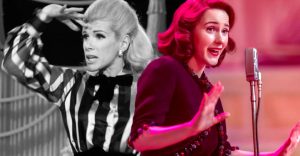Total War: Warhammer 3: Ogre Kingdoms Faction Guide (Tips & Units)

Players have several choices as to which faction they can play in Total War: Warhammer III and one of the more jovial are the Ogre Kingdoms. These boys will work with just about anyone if there is food involved, as there were ogre mercenaries in Total War: Warhammer II. If they can’t work with a faction, the ogres can just eat them instead. There are two different Legendary Lords for the Ogre Kingdoms to choose from, the Overtyrant Greasus Goldtooth and the Prophet of the Great Maw, Skrag the Slaughterer. Each lord plays differently and has unique faction effects, which means players will choose different units and strategies depending on the lord they pick.
Some strategies and mechanics apply to both characters. For example, Ogre armies always need meat. If they run out, they start to suffer attrition. Some buildings allow troops to replenish meat, and building camps keep their current meat amount from decreasing so long as the army is within the camp’s influence circle. Meat can also be eaten before a battle to increase the units’ stats in Total War: Warhammer III. Just make sure to keep an eye on how much meat an army has when playing as the Ogre Kingdoms and build camps, as they allow access to the Ogre Kingdoms’ best units.
Players should aim to complete the quests issued to them at the beginning of the game. Not only does it guide players, but there are good rewards for completing quests. For example, it can get them items or gold, which help enable the player’s Legendary Lord of choice to quickly build a powerful empire.
Units of Ogre Kingdoms in Total War: Warhammer III

The type of units that players choose depends on its role and the kind of lord leading it. For example, Greasus Goldtooth has a special ability that makes Ironguts cheaper, so it makes sense to have many of them in his army. In addition, it’s useful for when he goes up against some of Grand Cathay’s units in Total War: Warhammer III. Skrag’s campaign relies much more heavily on magic. His faction gives +2 recruit rank for Butchers, meaning players will likely have at least one of these Hero units in their other armies when they begin to recruit additional lords. Skrag himself give bonuses to Gorgers, letting them replenish more quickly and reducing the cost of upkeep. Players should put a lot of Gorger units in Skrag’s army as a result.
Ogre Kingdoms is a faction mainly made up of monstrous creatures. Ogre Kingdoms only have one infantry unit in the game, Gnoblars, and only one missile infantry, Gnoblar Trappers. These cousins of goblins are deceptively good units if used properly. They are bad in combat and have poor leadership, but they are incredibly cheap, so they are almost always worth the cost. They function in a similar role to the Hastati in Total War: Rome Remastered, in that they are an expendable unit that protects more important units. They can take an opponent’s charge, will wear the enemy down, and tire them. Players can then send in their heavy hitters to deal damage. Alternately, Gnoblars or Gnoblar Trappers can tie up enemy units long enough for powerful units to do work elsewhere, like in siege battles. The Gnoblars likely won’t win and will end up running away, but they will keep those units busy and keep the Ogres from getting overwhelmed and suffering catastrophic losses.
By using a Hunter hero, it is even possible to make Gnoblars unbreakable, meaning they will never run from combat until they are completely wiped out. It’s up to players to decide if they want that because there is merit to having Gnoblars run. First, they will survive more if they do so. Second, other units get no penalty to their leadership if Gnoblars do run as they have the Expendable trait, and they will generally reform after a time. Third, they can pull enemy units out of position, allowing players to divide and conquer. Finally, Skrag may want Gnoblars to be unbreakable, making it easier for him and other Butchers to cast spells to hamstring enemies. Skrag does not want to be in melee for long, after all.
Early on, players will probably have a few units of Ogre Bulls, as they are an easy unit to recruit and deal good damage to many early game units. However, they are weak against armor, so players will eventually want to replace them with other units such as the aforementioned Ironguts. Nevertheless, there are benefits to having many monstrous units, as Rakarth can attest to. The Ogre Bulls cause fear, can batter down walls and doors, and have the powerful Ogre Charge ability. Unfortunately, enemy forces braced for impact find that it isn’t much help against an incoming ogre.
Playing as Greasus Goldtooth in Total War: Warhammer III

Oddly enough, despite his title of Overtyrant, Greasus Goldtooth is one of the more cooperative lords in the game. He mercilessly crushes his enemies and sees them driven before him, but he prefers to trade. His faction gives +25% bonus income from trade and +20 to diplomatic relations to other Ogre Kingdoms. The first ability players should get for Greasus is Tribestealer, as it increases diplomatic relations with other Ogre Kingdom factions even more. It also gives better melee attack and weapon strength against them, but Greasus should try to play nice. There are plenty of enemies to conquer soon enough, and it is nice to have some allies. Suppose players select Tribestealer turn 1 after winning the battle. In that case, they can engage in diplomacy with many of the other Ogre Kingdoms, making non-aggression pacts, trade agreements, and perhaps even military access. Be sure to balance the offer at the end because it’s possible that some factions even offer gold as part of the deal. The Crossed Clubs deserve no mercy, as they exist to be destroyed.
The first big goal players should aim for is controlling the Ivory Road. That means taking control of each of the four settlements in the province. Players start with the Great Hall of Gresus and should try to take Grimtop first. Next, take Amblepeak to finish off the Crossed Clubs. Karak Krakaten appears empty, but players of other Warhammer games know to be skeptical of ruins because it might have a rat problem. It is home to Clan Mordkin, a minor Skaven faction. They may be rodents of unusual size, but Greasus and his Ogres are bigger. From here, players can conquer in whatever direction they choose. For those who can’t or won’t engage in trade negotiations, Greasus also gets bonuses from raiding and sacking or looting settlements. Whether at peace or war, Greasus Goldtooth will get his money.
Playing as Skrag The Slaughterer in Total War: Warhammer III

Skrag The Slaughterer starts in the Southern Grey Mountains, near where Heinrich Kemmler started in Total War: Warhammer 2’s Mortal Empires campaign. Luckily, Skrag doesn’t have to deal with Kemmler’s armies. Undead don’t have much meat on their bones, and if they do, it’s rotten, not that it would stop many ogres. Instead, players must deal with Dwarves. Their great weakness is that they are notoriously slow, so players should use fast units to flank them whenever possible. Cavalry or creatures like the Sabertusk Pack works well for this. They work well against The Empire factions, too, as The Empire frequently has cavalry, and engaging them prevents them from flanking the player.
The great part about Skrag’s starting position is that it is in the bottom right corner of the map, making it very defensible. As a result, Skrag can conquer The Empire’s lands, and they can’t do much to stop him, meaning he can build up his forces for when it is time to invade the Realm of Chaos when rifts open around turn 30.
Total War: Warhammer III is available on PC.
About The Author

















